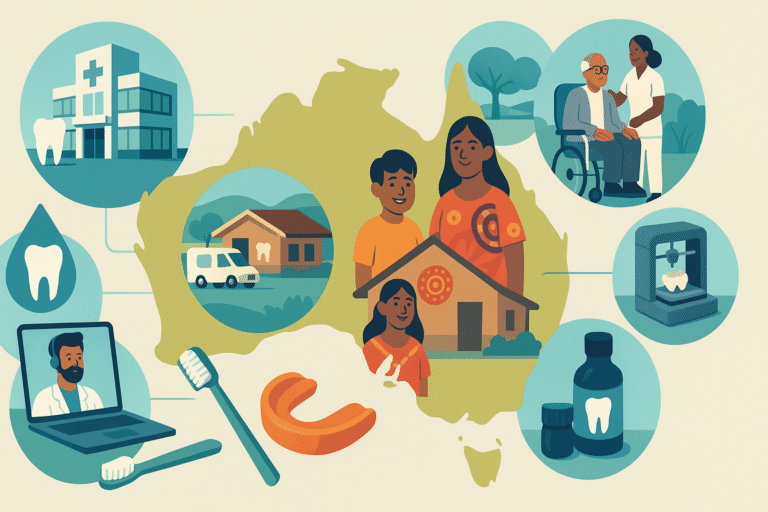Australia’s healthcare system is widely regarded as one of the best in the world, offering its citizens and residents access to comprehensive medical services. The healthcare system is a blend of public and private sector contributions, ensuring a high standard of care. The key elements of the system are its accessibility, the quality of services, and its financing model, each of which plays a crucial role in maintaining the health of the nation.
Access to Healthcare Services
In Australia, access to healthcare services is ensured through the Medicare system, a universal health insurance program that provides citizens, permanent residents, and some temporary residents with free or subsidized healthcare services. Medicare covers a wide range of medical treatments, including visits to general practitioners (GPs), specialist consultations, hospital stays, and essential medical procedures. This broad access to care reduces financial barriers for the majority of Australians, helping to ensure that individuals can receive medical attention when needed, regardless of their economic status.
For those requiring services outside of Medicare’s coverage, private health insurance offers supplementary coverage for hospital treatments, private healthcare services, and additional options such as dental care and optical services. This dual system provides flexibility and enhances accessibility by offering more options, especially in areas with long wait times in public hospitals.
Despite the strengths of the system, challenges still exist in terms of regional disparities. While urban areas generally have robust healthcare facilities, rural and remote communities sometimes struggle to access essential services due to a shortage of healthcare professionals and facilities. To address this, the government has implemented various initiatives aimed at improving access to healthcare in these regions, including telemedicine and incentives for healthcare professionals to work in underserved areas.
Quality of Healthcare Services
Australia’s healthcare services are known for their high quality, underpinned by well-trained healthcare professionals and a strong regulatory framework. The country boasts an excellent standard of medical education and a strict licensing system that ensures healthcare workers meet stringent standards of practice. Hospitals, clinics, and healthcare facilities are held to rigorous quality control standards, which ensures that patients receive top-tier care.
The Australian Institute of Health and Welfare (AIHW) and other regulatory bodies monitor the quality of healthcare services through various metrics, including patient satisfaction, treatment outcomes, and safety standards. Furthermore, the National Safety and Quality Health Service Standards (NSQHS) are designed to guide healthcare providers in delivering safe and high-quality care to patients.
Private hospitals and clinics in Australia also maintain high-quality standards, with many offering cutting-edge medical technology and specialized care options. The competition between public and private sectors has, in many cases, led to improvements in service quality as each strives to provide the best possible care.
However, there are areas where the quality of care can vary, particularly with long waiting times for elective surgeries in public hospitals. These waiting times can be a source of frustration for patients, though the government has been working to alleviate this issue by increasing hospital funding and improving healthcare delivery processes.
Financing the Healthcare System
Australia’s healthcare system is primarily financed through taxation, with the government collecting funds through a mix of general income taxes and a specific levy known as the Medicare Levy. This levy is calculated as a percentage of a taxpayer’s income and is directed toward funding the public healthcare system. For high-income earners, an additional surcharge known as the Medicare Levy Surcharge is applied if they do not hold private health insurance.
In addition to these public funds, Australians also contribute to their healthcare costs through private health insurance premiums. The private sector plays a significant role in supplementing public services, offering individuals faster access to treatments and more choice in healthcare providers. The government encourages private health insurance by offering tax rebates and imposing financial penalties on those who opt not to take up private health insurance, further reducing the strain on the public system.
The cost of healthcare in Australia is carefully managed, and the government regularly reviews funding models to ensure that all citizens have access to affordable care. There are also various programs and subsidies designed to assist disadvantaged populations, including low-income earners, Indigenous Australians, and elderly citizens.
While the healthcare system is generally well-funded, there are ongoing discussions about sustainability, particularly in light of Australia’s aging population. As the number of elderly Australians rises, there will be increasing pressure on both public and private healthcare services. The government continues to explore innovative solutions, such as preventative health initiatives and digital healthcare, to manage future costs and improve the efficiency of service delivery.
Conclusion
The Australian healthcare system is designed to provide equitable access to high-quality care for all citizens and residents. The combination of Medicare, private insurance options, and government initiatives ensures that healthcare services are widely accessible, even in remote regions. The system’s strength lies in its commitment to quality, with strict regulations and high standards for medical professionals and healthcare facilities. Financing through taxation and private insurance allows for a balance between public and private sector involvement, though challenges remain in addressing regional disparities and ensuring long-term sustainability. Overall, Australia’s healthcare system remains a model of efficiency and effectiveness in the global landscape.









